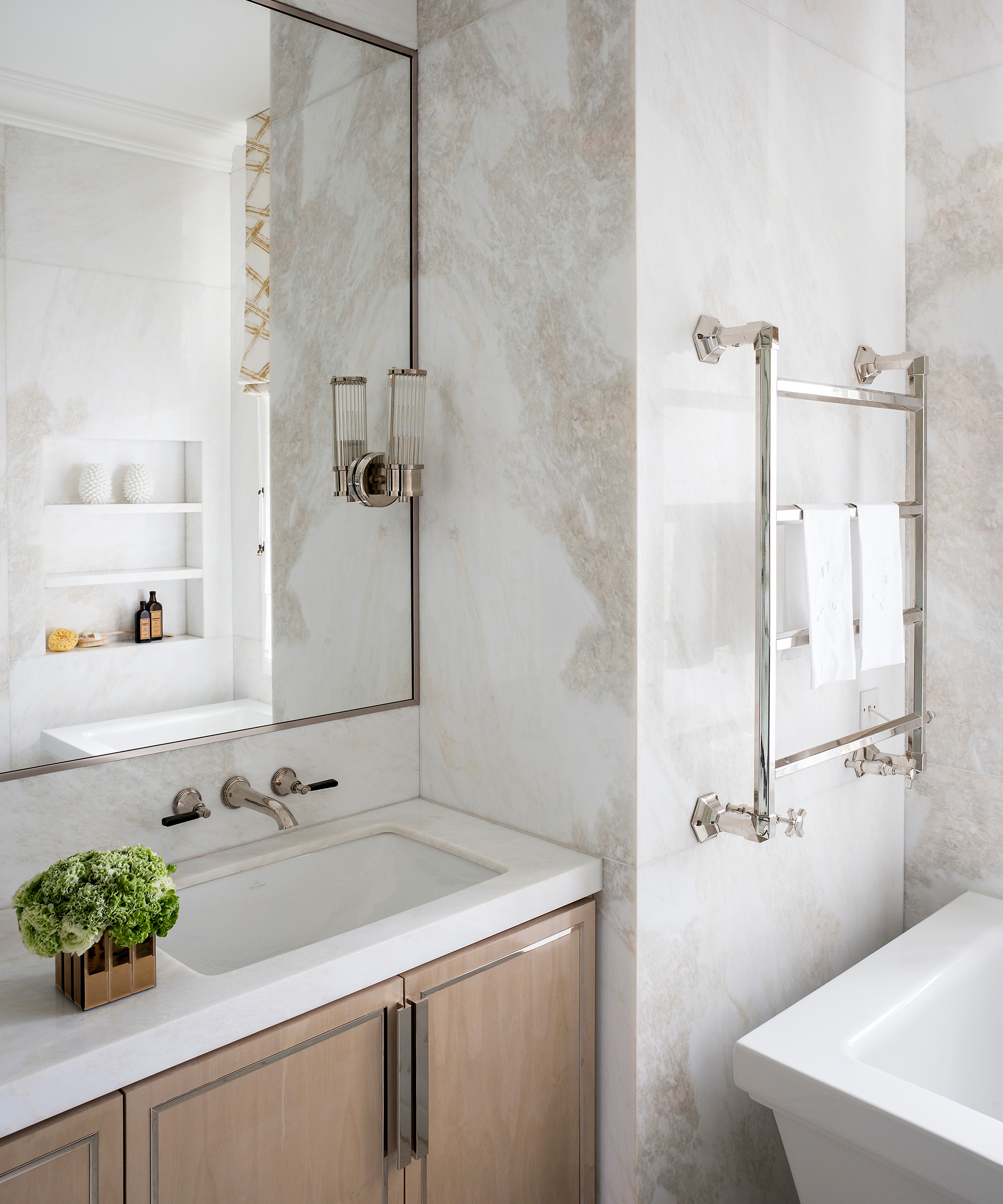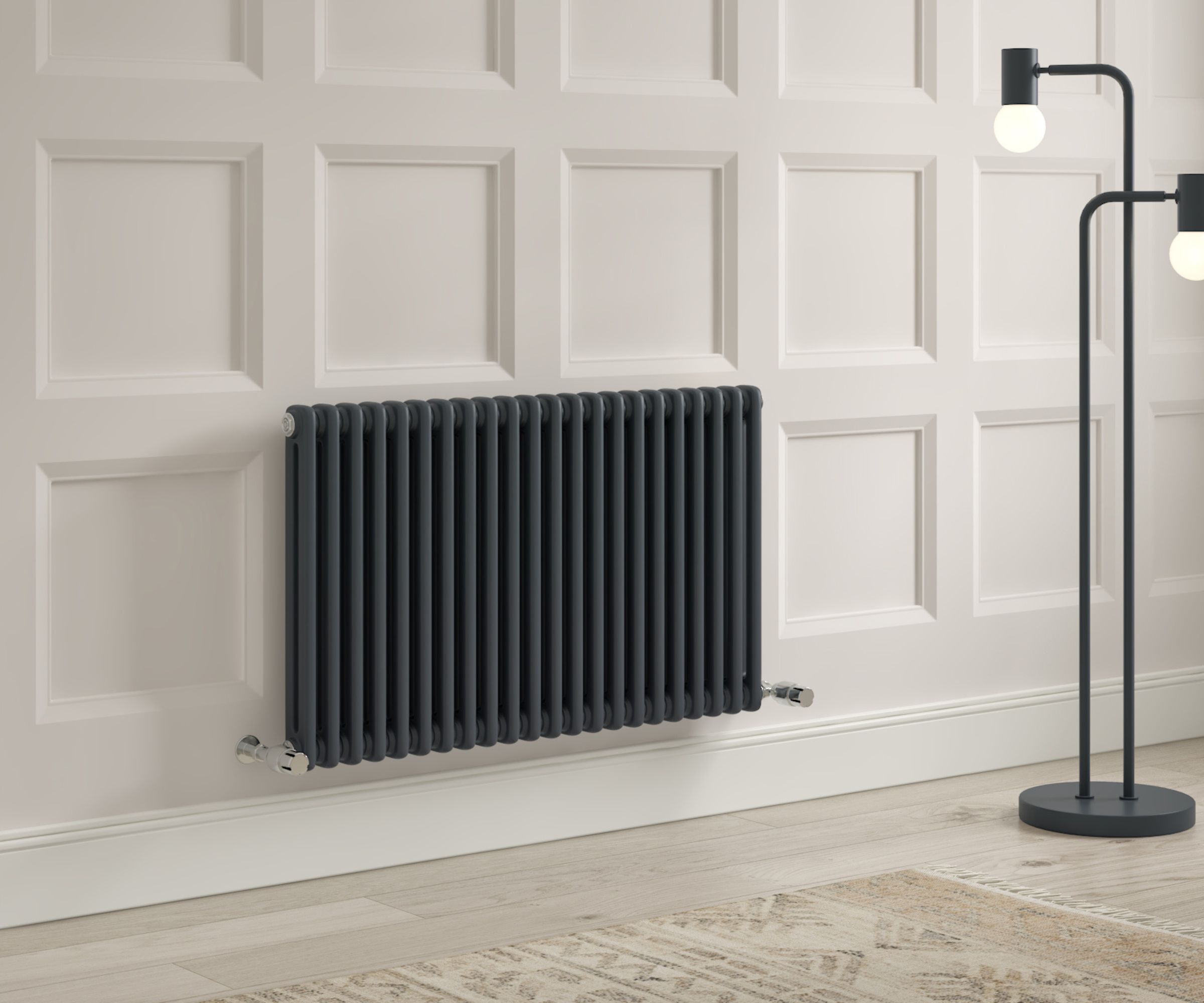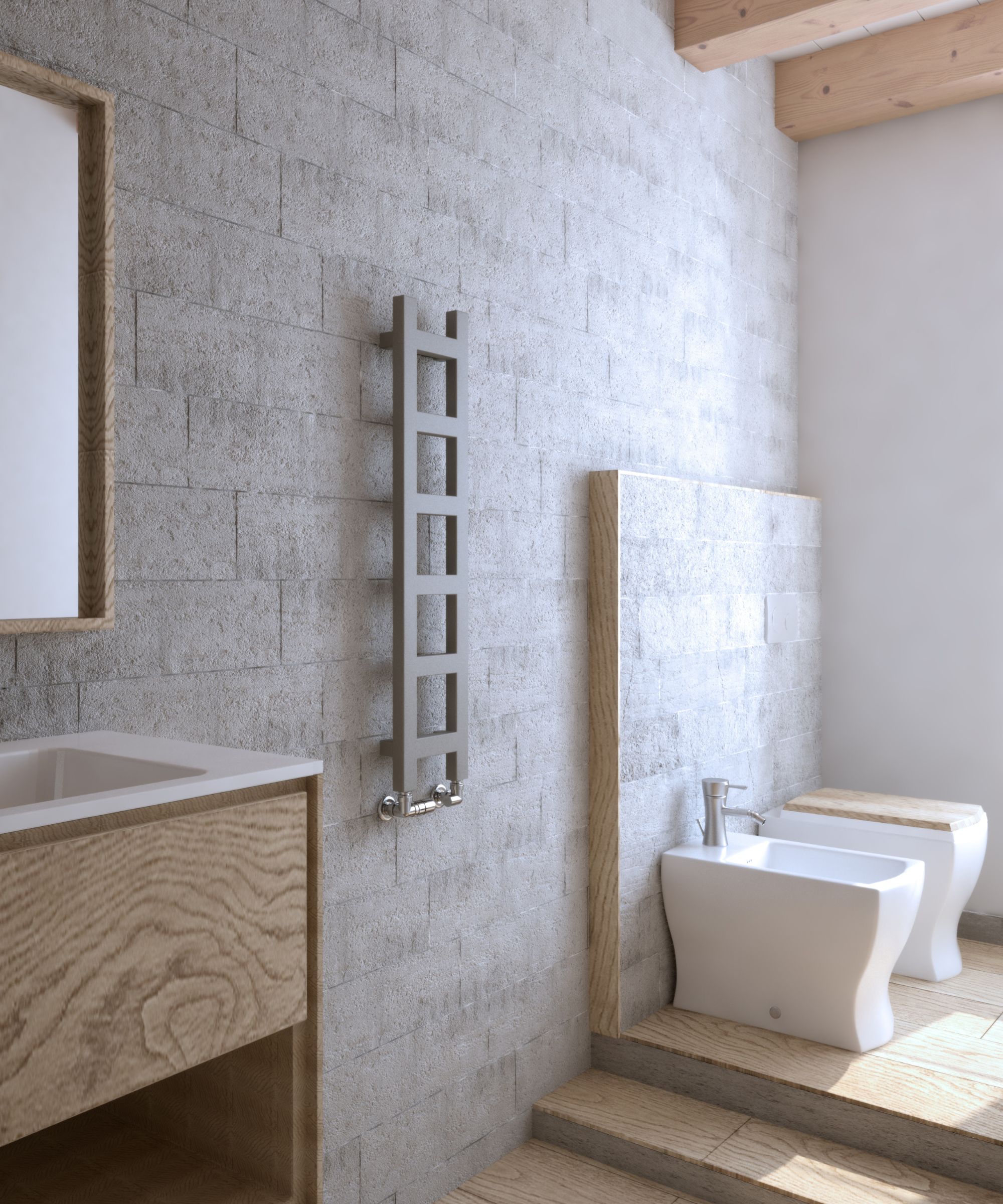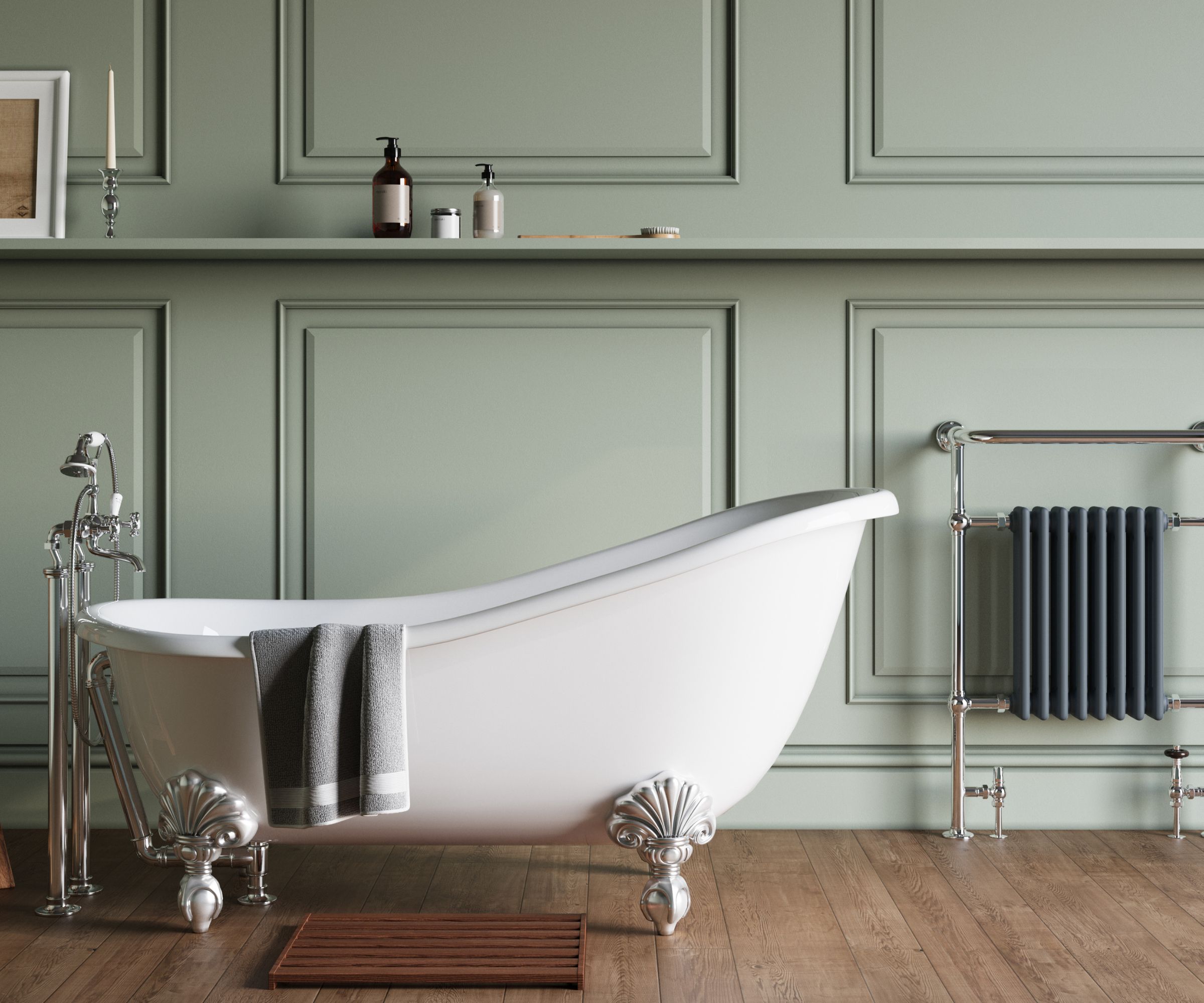How to fix a radiator leak in 6 steps, according to plumbing experts
While not a permanent solution, these methods can prevent leaks from damaging your radiator and home, saving you money and effort


A leaking radiator can be a costly issue. However, with prompt action and the right approach, you can effectively stop this problem in its tracks.
Whether you've noticed your radiator is dripping or there is a more substantial leak, immediately following these steps can prevent further damage to your home and restore the efficiency of this home heating system. Additionally, keeping your radiator running faultlessly can even help to cut energy bills.
We asked plumbing experts how to fix a radiator leak and these are the six, simple steps they recommended.
How to fix a radiator leak
'Usually, radiators are not too hard to fix. A lot of times, all it takes is tightening up parts like valves or couplings to stop the leak. Other times applying glue or sealant where it's leaking does the trick,' explains Matthew Ferris, a master plumber and the founder of Ferris Plumbing. 'But if the radiator itself is rusty or broken inside, you'll need a new one.'
1. Locate the leak

'Before tackling any sort of repair job, you’re going to have to try and establish where the leak is coming from,' says Sean Richardson, plumbing expert and owner of Complete Plumbing Solutions.
'If the leak is coming from the radiator itself, wipe it dry and have a look around for any water dripping onto the floor. If you suspect the leak is originating from the pipework or the valves to the radiator, you can dry off the area with a cloth and then place some paper towels around the pipes/valves in order to try and determine where the leak is coming from.'
You should also inspect connections and examine all fittings and rubber hoses. Look for cracked joints or degraded tubes, as these are all common leak points. Thoroughly clean the area around the leak to accurately assess the damage.
Design expertise in your inbox – from inspiring decorating ideas and beautiful celebrity homes to practical gardening advice and shopping round-ups.
2. Turn off the heating system

'When a radiator is leaking, it's important to turn it off to isolate it from the rest of the system,' explains Shlomo Cherniak, owner of Cherniak Handyman Services. 'This should help stop the leak, although it may not stop immediately.
Give it some time for the pressure to drop low enough. This will also ensure the radiator is cool before you start repairs to prevent any accidents or further damage.

Shlomo Cherniak is a handyman and founder of Cherinak Home Services in Baltimore. He has over seven years of experience in home improvement, with him and his team specializing in everything from installing kitchen cabinets to fixing leaky faucets to hanging pictures on the wall.
3. Drain the system

'If the leak persists even after turning off the radiator, you may need to drain the radiator,' advises Shlomo Cherniak. 'Make sure to drain the water to a point below the leak to prevent further water from escaping.'
'You’ll need to stop the flow of water into the radiator by closing the lockshield valve, which is usually found on top of the valve, under a little plastic cap,' explains Sean Richardson. 'Use a pair of pliers to turn the valve clockwise, stopping the flow. Then, you can drain the radiator.
'Put down some towels and a basin large enough to handle the water capacity of your radiator to catch the water as it drains. Once the water is drained, turn off the water supply valve to stop the radiator from filling while you work on it.'
4. Apply epoxy or sealant

If the leak is coming from the radiator tank or a small crack in the radiator body, there are a couple of temporary fixes you can try.
'Apply epoxy putty or sealant to plug minor leaks or cracks,' advises Shlomo Cherniak. 'To do this, clean and dry the area around the leak thoroughly. Knead and apply epoxy putty according to the manufacturer's instructions. Allow it to set fully before turning the heating system back on'.
For this task, we like to use a Janolite Epoxy Putty Repair Stick, from Amazon. Allow the epoxy or sealant to cure completely before refilling the radiator, and remember this is only a temporary fix - the radiator may eventually need replacing.
If the leak persists – or if it's a larger hole or crack – you should consider using a commercial radiator stop leak product, such as Bar's Leaks radiator stop leak from Walmart. These products can be poured into the cooling system to seal the leak. However, it's important to follow the instructions provided by the specific product you choose. For information on the proper dosage, always refer to the manufacturer's guidelines.
5. Replace leaking valves

'If your leak is coming from a valve, it’s probably a quick fix,' explains Sean Richardson. 'Simply tighten the nuts on the valves attached to your radiator with a spanner – if this sorts the problem, job done.'
'If that doesn't work, you may need to replace the valve,' explains Shlomo Cherniak. 'To do this, you'll need to discharge any water, cut off the water supply, and turn the lockshield valve. You can then replace the valve yourself or call a plumbing expert for assistance.'
To replace the valve yourself, Josh Mitchell advises: 'Remove the valve carefully, noting how it was assembled. Replace the old washer with a new one of the same size and type. Reassemble the valve and turn the water supply back on, making sure every link is secure.'

Josh Mitchell is a plumbing expert, HVAC technician, and the founder of Air Conditioner Lab and Plumbing Lab. When he noticed a lack of online resources for solving home plumbing problems, he decided to do something about it by offering easy-to-follow, expert advice.
6. Refill and bleed the radiator

'Once the epoxy is cured or everything is connected back up, reopen the lockshield valve to get water flowing back into the radiator or refill the radiator with water or coolant,' advises Sean Richardson. 'You’ll also need to open the bleed valve to bleed the radiator and get the radiator refilled, so make sure you have your valve key handy.'
When water (not just air) starts coming out, close the bleed valve. This removes trapped air, improving the efficiency and heat distribution of your radiator.
FAQs
When should you call a professional to fix radiator leaks?
Don't hesitate to seek professional help when fixing radiator leaks if:
- You are not confident in your repair skills.
- The leak is substantial.
- The radiator is very old and/or rusted
- The system shows signs of extensive corrosion or damage.
Once you have fixed any leaks, turn on the heating system and monitor any signs of new leaks. Additionally, for older, severely leaking radiators, full replacement may be necessary. We always recommend consulting a plumber to ensure proper installation.

Lola Houlton is a news writer for Homes & Gardens. She has been writing content for Future PLC for the past six years, in particular Homes & Gardens, Real Homes and GardeningEtc. She writes on a broad range of subjects, including practical household advice, recipe articles, and product reviews, working closely with experts in their fields to cover everything from heating to home organization through to house plants. Lola is a graduate, who completed her degree in Psychology at the University of Sussex. She has also spent some time working at the BBC.